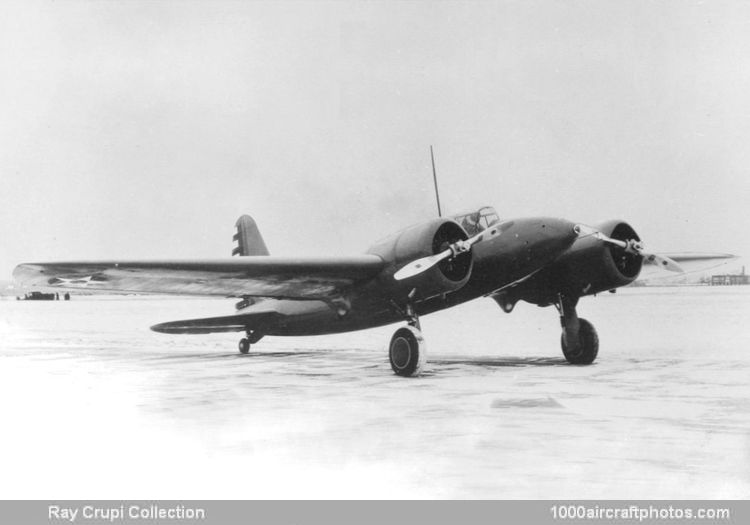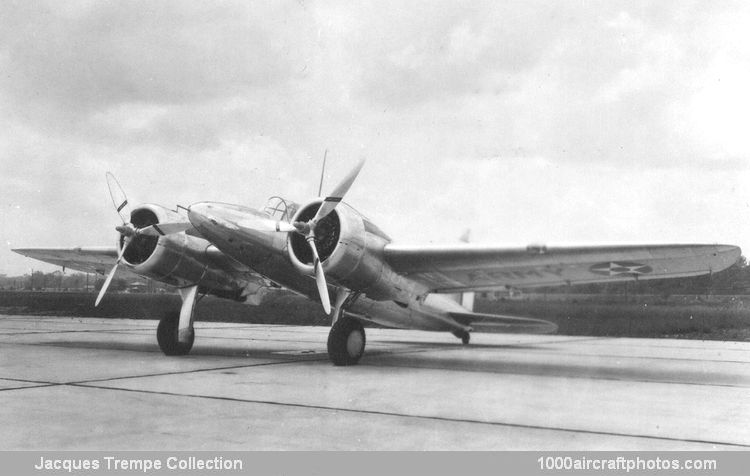08/31/2011. Remarks by
Johan Visschedijk: "In 1934 Curtiss initiated the Model 76 two-seat, twin-engined ground attack design for the Army which eventually became the XA-14. Flown initially as a company-owned aeroplane with civil registration NX-15314, it was fitted with the new and unproved Wright R-1670-5 two-row engines under circular cowlings driving Curtiss two-blade two-position propellers. The construction was all-metal, with fabric covering only on the movable control surfaces and on the wing aft of the front spar. All three landing gear units retracted aft, leaving half of each wheel in the airstream.
Four 0.30 in (7.62 mm) machine guns were concentrated in the extremely short nose, and a single flexible 0.30 in (7.62 mm) machine gun was in the rear cockpit, which was situated inconveniently far aft of the forward cockpit. Bombs were carried in a fuselage bomb bay and chemical smoke tanks or additional bombs could be carried under the wings.
Following its first flight in September 1935 the Model 76 was tested by the Army at Wright Field and then returned to Curtiss. It underwent modifications that included a notable change of engine cowling shape and new constant-speed propellers, the aeroplane was accepted by the Army in December as the XA-14, Army s/n 36-146. The XA-14 had a short military life; after being used to test 37-mm cannon installations, it was scrapped in August 1938 with a total of only 158 flying hours.
Curtiss 76A Y1A-18 Shrike (37-52) (
Jacques Trempe Collection)
On 23 July, 1936, the Army ordered thirteen Service test aircraft (s/n 37-52 to 32-64, c/n 12187 to 12199), designated Model 76A Y1A-18. The designation change resulted from the use of Wright R-1820-47 engines driving three-bladed propellers, while the bomb load was now carried in bays in each wing holding 200 lb (90 kg) each.
Deliveries began in July 1937 and were completed by October. The Y1A-18s served initially with the 8th Attack Squadron of the Third Attack Group but were transferred to the Third Bombardment Group for operational training as plain A-18s in 1940. The last A-18 was withdrawn from service in 1943.
While the new Shrikes, the Army's first twin-engined models in the ill-defined Attack Series, performed well, no production orders resulted. The Y1A-18 experience proved the advantages of the twin-engined type, however, and established the Air Corps requirements that resulted in the larger and heavier Douglas
A-20 and
A-26 designs.
An improved Model 76B with Pratt & Whitney R-1830 engines was proposed to the Army but not accepted and a similar Model 76B was advertized for export but found no customers."


